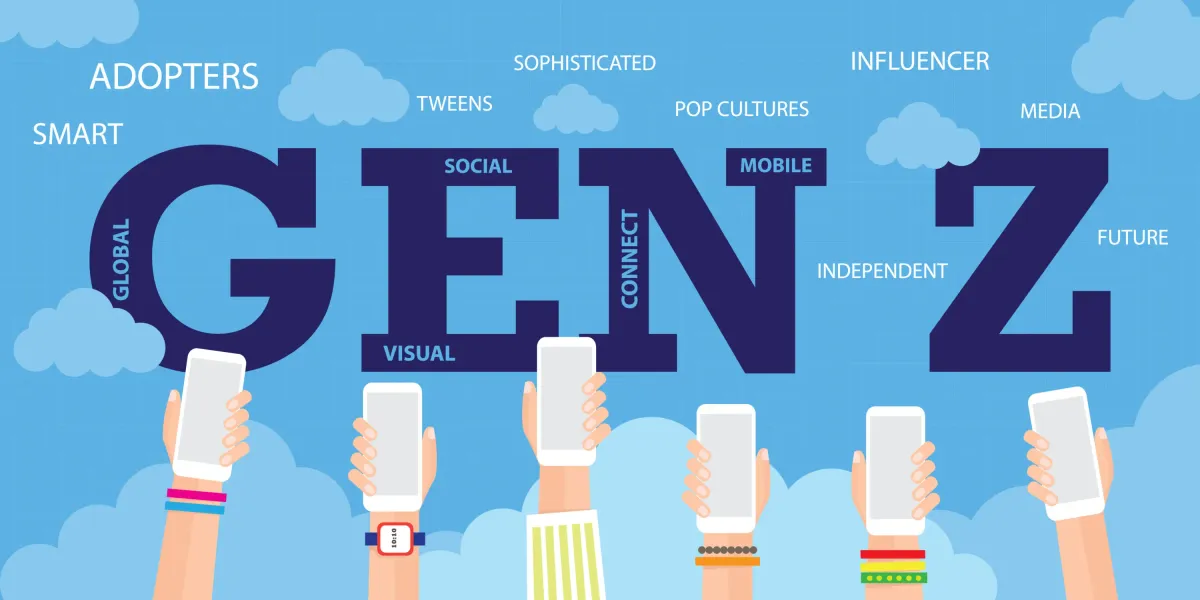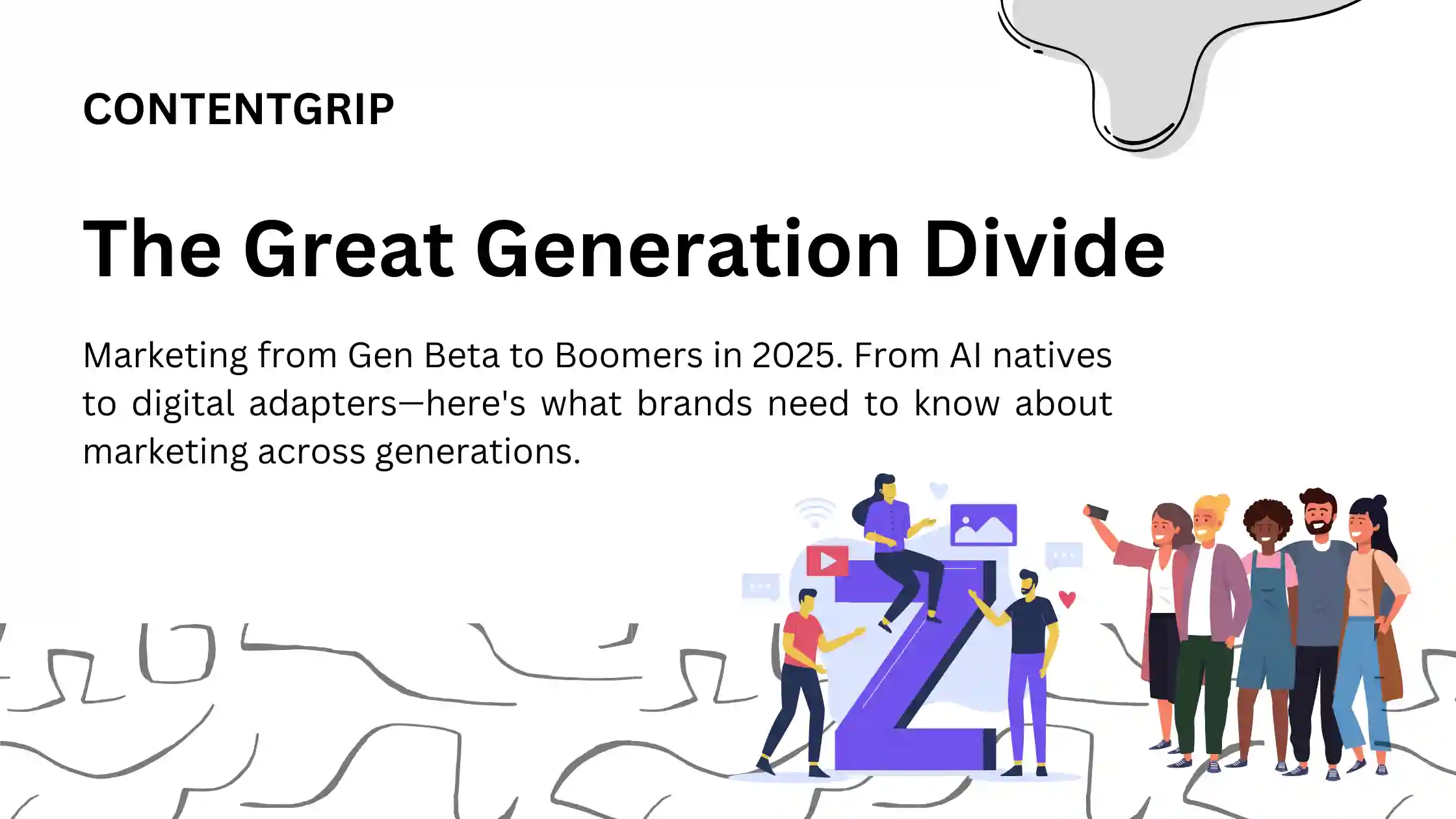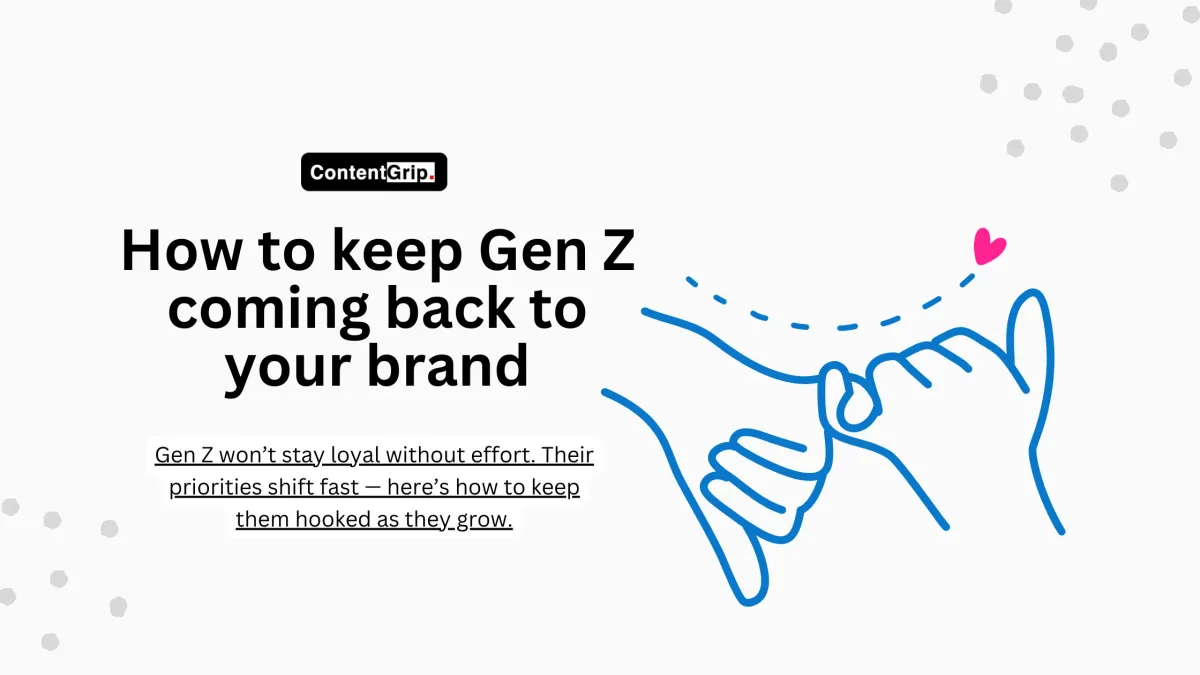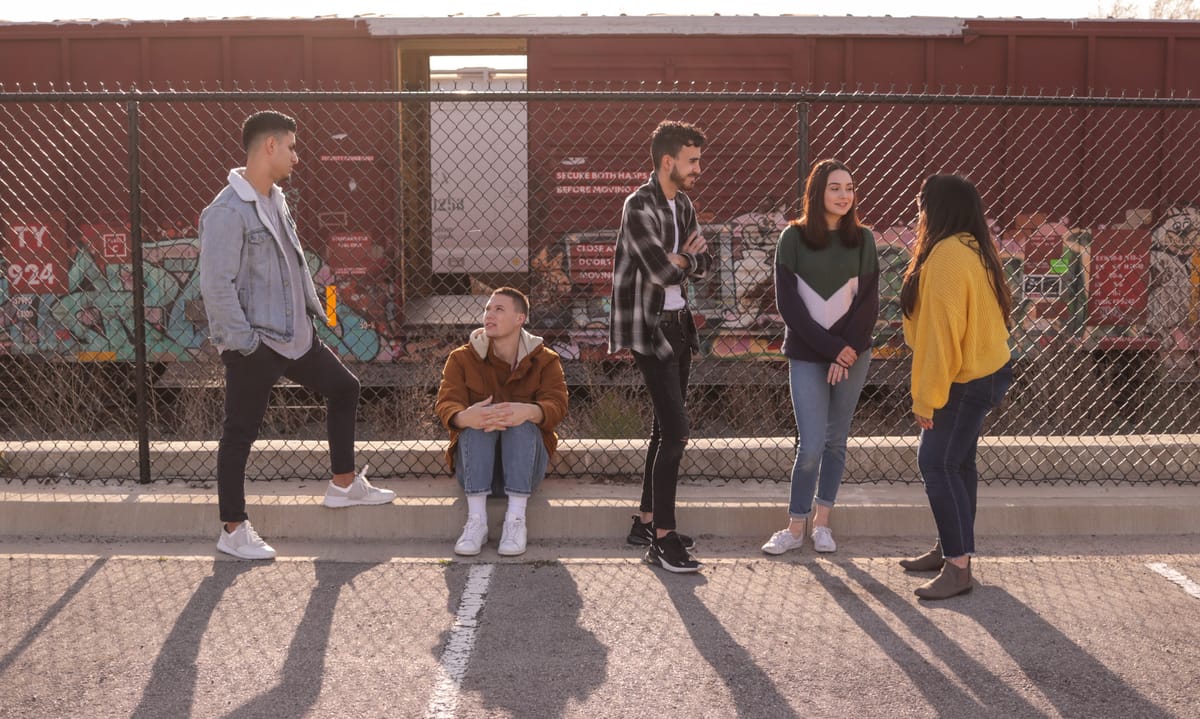Gen Z and social media: what brands must know now
From TikTok to Instagram, Gen Z dominates social media. Find out why they scroll, post, and buy more than any other generation.

Gen Z, the digital generation, is growing to be the most prominent voice on social media, so how can marketers reach them?
Social media is so entrenched in every part of our day-to-day lives, but it seems that members of Gen Z have become the most affected by it.
As the most active group on social media, Gen Z has its foot on the accelerator, driving discourse and culture, often in new directions.
Marketers and media practitioners have definitely taken notice as they try to replicate similar viral success with their branded posts.
Read on to learn more about how Gen Z interacts with social media.
💡 Pressed for time? Here’s what matters:
- Gen Z lives on social media – 91% use Instagram, 86% are on TikTok.
- Short-form video rules – TikTok, Reels, and Shorts drive engagement.
- Social media drives purchases – 60% find new brands there.
- They influence household spending – 81% shape family purchases.
- Ethics matter – 73% pay more for sustainable brands.
- Mental health matters – 46% limit screen time.
- Be real or be ignored – Authenticity wins, outdated marketing flops.

What’s with Gen Z and social media?
Gen Z, aged 10 to 27, has grown up with the internet, making social media a core part of their daily lives. Unlike previous generations, they don’t just scroll—they create, engage, and influence.
Social media is where they learn, connect, and stay updated. It’s not just entertainment; it’s their go-to for news, activism, and self-expression. Platforms like TikTok, Instagram, and YouTube dominate, with 91% of Gen Z on Instagram and 86% on TikTok.
Gen Z doesn’t just consume content—they shape online culture. From viral trends and memes to serious discussions on global issues, their influence is everywhere. Their buying decisions, brand loyalty, and online interactions push businesses and media to adapt.
Simply put, if you’re not in their social feeds, you don’t exist. Brands, marketers, and creators need to speak their language, stay relevant, and be authentic to connect with this generation.
Top 3 platforms to find Gen Z online
Unlike older generations, Gen Z responds most positively to video rather than text or images. The youngest generation's emerging social media “Big Three” is YouTube, TikTok, and Instagram.
Gen Z uses these platforms not only as viewers but also as content creators. In the new age of Gen Z and social media marketing, brand ambassadors, influencers, paid in-video advertisements, and company channels are the new way into the video digital arena.
That being said, profiles with consistent uploads and an active follower base that is addressed sincerely and frequently often get results.
Short-form video content: Gen Z's favs
This probably comes as no surprise, but Gen Z is the most active on TikTok and Instagram Reels, where they consume and create short-form video content.
Their interest in these platforms is actually growing and taking on non-traditional roles. In fact, almost 40% of Gen Z prefers searching on TikTok rather than Google for information.
This new change has led Google to index TikTok clips, and similar growth has prompted Google to start indexing Instagram videos.
Interestingly enough, YouTube Shorts have not yet been indexed on Google, despite the ownership of YouTube.
Nevertheless, this functionality likely is in the works, given that YouTube has been pushing YouTube Shorts lately.
Why are short videos so appealing to Gen Z?
Everyone knows the old saying about a picture being worth a thousand words and a video being worth a million words.Short-form video content resonates with Gen Z because content is more bite-sized, hence easier to digest.
Plus, information is shared and consumed quickly, resulting in a hypersocial environment – thus leading to more frequent dopamine surges in the brain’s reward pathways when socialisation occurs.
As a member of Gen Z, I have spent countless amounts of time scrolling through social media feeds, watching seemingly pointless, but also at many times valuable, clips. Short-form video content is simply addictive and is a great way to pass the time and avoid growing pains and, well, work.
How Gen Z makes purchasing decisions
Gen Z is a highly influential demographic in the consumer market, with a spending power of over US$360 billion globally.
While many still rely on their parents for major purchases, their online presence and engagement shape brand awareness and purchasing trends.
The role of social media in shopping
Social media platforms like Instagram and TikTok have blurred the lines between content and commerce, turning social media into a primary shopping destination.
According to recent Gen Z social media statistics, over 60% of Gen Z shoppers discover new brands through social media before making a purchase decision.
Influencing parental buying decisions
Although younger Gen Z and Generation Alpha may not have direct purchasing power, they heavily influence their parents' buying choices. A study found that 81% of parents say their Gen Z children influence household purchases.
A notable example is Ryan’s World, a YouTube channel where a child reviews toys. This channel garnered millions of views per video and revolutionized online toy marketing, demonstrating how content can drive sales.

The rise of social commerce
Unlike previous generations who relied on traditional e-commerce, Gen Z prefers integrated shopping experiences on social media.
Features like Instagram Shops, TikTok Shop, and influencer promotions make it seamless for them to engage with brands and make instant purchases. Gen Z is twice as likely as older generations to make a purchase through social media.

Mindful spending and ethical consumerism
Gen Z isn’t just buying impulsively—they are highly intentional shoppers. Their awareness of mental health, sustainability, and brand ethics significantly influences their spending habits.
- Informed shopping decisions – 67% of Gen Z prefer shopping in brick-and-mortar stores, and 65% research products online before purchasing. They cross-check online reviews, product details, and ethical considerations before making a final purchase.
- Conscious consumerism & ethical buying – 73% of Gen Z consumers are willing to pay more for sustainable products. They prioritize brands that align with their values, such as sustainability, inclusivity, and fair labor practices.
- Digital burnout and shopping behavior – 46% of Gen Z actively limit their time on social media for mental health reasons [4]. This means brands must deliver meaningful, high-impact content instead of relying on constant exposure.
How to Capture Gen Z Audience?
- Prioritize short-form video – Use TikTok, Instagram Reels, and YouTube Shorts for engaging, fast-paced content.
- Be authentic – Avoid overly polished ads; Gen Z values real, relatable content.
- Leverage influencers – Partner with micro and macro influencers who align with your brand.
- Engage in two-way communication – Respond to comments, create interactive polls, and use user-generated content.
- Focus on social commerce – Enable seamless shopping experiences on Instagram and TikTok.
- Highlight social values – Gen Z supports brands with strong stances on sustainability, inclusivity, and social justice.
- Optimize for mobile – Ensure all content is mobile-friendly and easy to consume on smartphones.
- Personalization is key – Use AI-driven recommendations and dynamic ads to cater to individual preferences.
- Create memes & trend-based content – Stay updated with internet culture and participate in trending challenges.
- Support mental health awareness – Promote positive digital well-being, avoid toxic marketing tactics, and create content that encourages balance and mindfulness.
- Be transparent – Clearly communicate brand values, sourcing, and company ethics.

There isn’t a tell-tale strategy for reaching Gen Z on social media, so pay close attention to their interests and personalize content as much as possible.
Prioritize video content to reach a young audience, and always look for collaborations through influencers, popular channels, and paid in-video ads.
Relevance, authenticity, consistency, and quality will keep your Gen Z audience coming back.

FAQs
How is Gen Z affected by social media?
Gen Z social media addiction is a growing concern, but at the same time, social media provides a platform for activism and self-expression.
What does Gen Z like on social media?
What Gen Z likes on social media today is authenticity. User-generated content, short-form videos, and interactive storytelling resonate most with this audience.
Is Gen Z the first generation that started social media use?
Although Gen Z is often associated with social media, they were not the first generation to adopt it. However, they are the first to grow up entirely in the digital era, making platforms like Instagram, TikTok, and YouTube their primary mode of communication.
What is the percentage of Gen Z on social media?
Recent studies indicate that over 90% of Gen Z uses social media daily, making them the most engaged demographic online.









